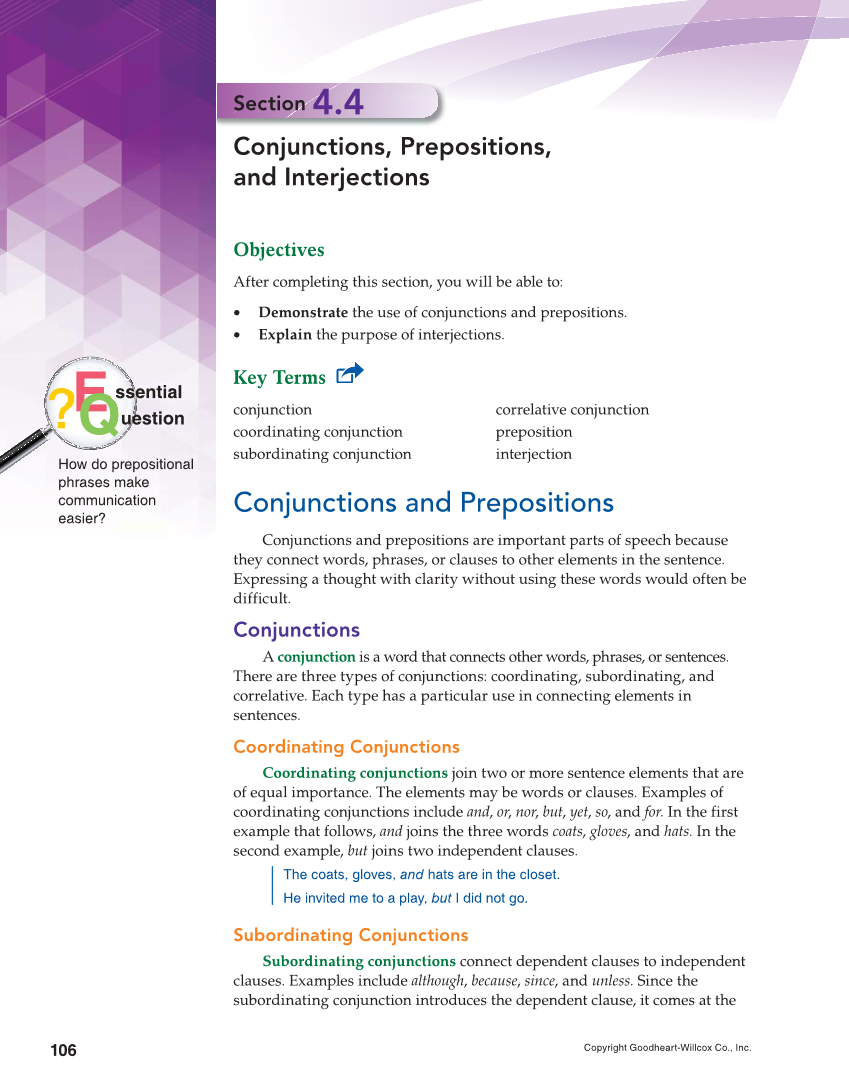106 Copyright Goodheart-Willcox Co., Inc. How do prepositional phrases make communication easier? E Q ssential uestion Section 4.4 Conjunctions, Prepositions, and Interjections Objectives After completing this section, you will be able to: • Demonstrate the use of conjunctions and prepositions. • Explain the purpose of interjections. Key Terms conjunction coordinating conjunction subordinating conjunction correlative conjunction preposition interjection Conjunctions and Prepositions Conjunctions and prepositions are important parts of speech because they connect words, phrases, or clauses to other elements in the sentence. Expressing a thought with clarity without using these words would often be difficult. Conjunctions A conjunction is a word that connects other words, phrases, or sentences. There are three types of conjunctions: coordinating, subordinating, and correlative. Each type has a particular use in connecting elements in sentences. Coordinating Conjunctions Coordinating conjunctions join two or more sentence elements that are of equal importance. The elements may be words or clauses. Examples of coordinating conjunctions include and, or, nor, but, yet, so, and for. In the first example that follows, and joins the three words coats, gloves, and hats. In the second example, but joins two independent clauses. The coats, gloves, and hats are in the closet. He invited me to a play, but I did not go. Subordinating Conjunctions Subordinating conjunctions connect dependent clauses to independent clauses. Examples include although, because, since, and unless. Since the subordinating conjunction introduces the dependent clause, it comes at the
